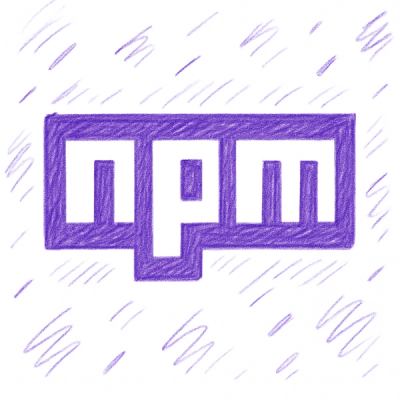
Security News
npm Adopts OIDC for Trusted Publishing in CI/CD Workflows
npm now supports Trusted Publishing with OIDC, enabling secure package publishing directly from CI/CD workflows without relying on long-lived tokens.
controllers
Advanced tools
A simple mvc framework and route extender for Express.
$ npm install controllers
After setting all your middleware in Express, call the controllers method to initialise.
express = require 'express'
controllers = require 'controllers'
app = express.createServer()
app.use(express.static(__dirname + '/public'));
# Make sure all your app.use statements have been called
controllers app, options
Your folder system should now look like the following:
site
|-> controllers
| |-> home.js (or coffee, if you have overwritten the require calls)
| |-> blog.js
|-> views
| -> home
| |-> index.jade (these are your views, use whatever renderer you want)
| |-> welcome.jade
| -> blog
| | -> index.jade
| -> shared
| -> layout.jade
Controllers are called depending on your routing, and the render call is overwritten to access the folder with the same name as the controller, falling back to the shared folder if needed.
When routing a controller and action must be defined, controllers extends the routing in Express to allow for default values
# app.get 'route', defaults, middleware...
app.get '/blogPage', { controller: 'blog', action: 'index' }, middleware
app.get '/:controller?/:action?/:id?', { controller: 'home', action: 'index' }, middleware
The above routing will route the following paths:
'/' -> Routes to the controller 'home' and runs the method 'index'
'/blogPage' -> Routes to the controller 'blog' and runs the method 'index'
'/home/welcome/1' -> Routes to the controller 'home' and runs the method 'welcome', with the 'id' param set to 1
The controller actions follow the normal convention of Express, taking the request, response and next arguments:
module.exports.index = (req, res, next) ->
res.render()
module.exports.welcome = (req, res, next) ->
id = req.param.id ?? 0
res.partial { id: id }
The render does not take an argument as the view for this action is automatically searched for in at 'views/home/index' and if that fails falls back to 'views/shared/index'.
There are a number of useful calls available in the controllers and views.
Controllers:
req.controller # stores current controller
req.action # stores current action
req.executeController 'controller', 'action', cb # Executes another controller and overwrites the next function with the cb
Views:
controller # stores current controller
action # stores current action
getUrl 'controller', 'action', defaultParams, queryParams # returns a url corresponding to the controller/action specified
getUrl 'action', defaultParams, queryParams # same as above but using the current controller
The default options are:
# If the controller/action is not defined do we throw an exception?
strict: true
# Overwrite the render/partial calls to use the 'controller/action' breakdown of the views
overwriteRender: true
# Log when the controllers are loaded and called
log: false
# Set the root folder for the controllers
root: app.set('controllers') || process.cwd() + '/controllers'
# Set the share folder in the views, all render/partial calls will fall back to this folder
sharedFolder: 'shared'
©2012 Felix Jorkowski and available under the MIT license:
Permission is hereby granted, free of charge, to any person obtaining a copy of this software and associated documentation files (the "Software"), to deal in the Software without restriction, including without limitation the rights to use, copy, modify, merge, publish, distribute, sublicense, and/or sell copies of the Software, and to permit persons to whom the Software is furnished to do so, subject to the following conditions:
The above copyright notice and this permission notice shall be included in all copies or substantial portions of the Software.
THE SOFTWARE IS PROVIDED "AS IS", WITHOUT WARRANTY OF ANY KIND, EXPRESS OR IMPLIED, INCLUDING BUT NOT LIMITED TO THE WARRANTIES OF MERCHANTABILITY, FITNESS FOR A PARTICULAR PURPOSE AND NONINFRINGEMENT. IN NO EVENT SHALL THE AUTHORS OR COPYRIGHT HOLDERS BE LIABLE FOR ANY CLAIM, DAMAGES OR OTHER LIABILITY, WHETHER IN AN ACTION OF CONTRACT, TORT OR OTHERWISE, ARISING FROM, OUT OF OR IN CONNECTION WITH THE SOFTWARE OR THE USE OR OTHER DEALINGS IN THE SOFTWARE.
FAQs
A simple mvc framework and route extender for Express
The npm package controllers receives a total of 1,239 weekly downloads. As such, controllers popularity was classified as popular.
We found that controllers demonstrated a not healthy version release cadence and project activity because the last version was released a year ago. It has 1 open source maintainer collaborating on the project.
Did you know?

Socket for GitHub automatically highlights issues in each pull request and monitors the health of all your open source dependencies. Discover the contents of your packages and block harmful activity before you install or update your dependencies.

Security News
npm now supports Trusted Publishing with OIDC, enabling secure package publishing directly from CI/CD workflows without relying on long-lived tokens.

Research
/Security News
A RubyGems malware campaign used 60 malicious packages posing as automation tools to steal credentials from social media and marketing tool users.

Security News
The CNA Scorecard ranks CVE issuers by data completeness, revealing major gaps in patch info and software identifiers across thousands of vulnerabilities.